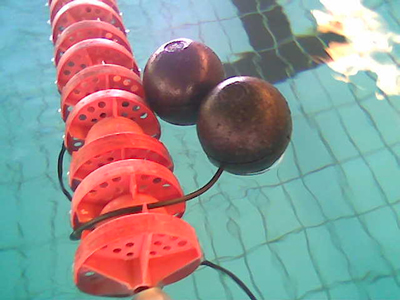Using CO2 in indoor pools reduces toxic emissions

06/10/2010
UAB researchers have analysed the effect of using carbon dioxide in substitution for hydrochloric acid (HCl) to control acidity (pH) in pool water in combination with sodium hypochlorite (NaClO) as a disinfectant. The research was carried out during four years at two pools located at UAB and at the pool of the Catalan Sports Council in Barcelona. Water was treated with CO2 and HCl in alternative periods, while scientists examined the composition of the water and air near the pool surface (the air breathed in by bathers).
The results, published in the journal Chemosphere, demonstrate that CO2 represents clear advantages with regard to hydrochloric acid. The first advantage, which was the one to spur on the research, was detecting that using CO2 prevents the possibility of accidentally mixing hydrochloric acid and sodium hypochlorite, causing a reaction in which large amounts of toxic gases are released and supposing a risk both for those working with the substances and for pool users.
However scientists observed an additional and unexpected advantage: the use of CO2reduces the formation of the oxidising agents chloramines and trihalomethanes, substances which are harmful to health and produced in reactions between sodium hypochlorite and organic remains found in the water. This reaction is the cause of the typical smell of “chlorine” in pools.
Using CO2 in pools also has environmental advantages. On the one hand it reduces the global emission of greenhouse gases and diminishes its "ecological impact". On the other hand, it does not change the electrical conductivity of the water as happens when hydrochloric acid is used and which affects living organisms when pool water is released into the environment as residual water.
Participating in the research were Anton Gomà from the Physical Activity Service (SAF); Albert Guisasola, Carlota Tayà, Juan A. Baeza, Albert Bartrolí and Javier Lafuente from the Department of Chemical Engineering; and Mireia Baeza and Jordi Bartrolí from the Department of Chemistry, UAB.